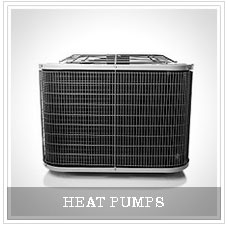My home system doesn’t seem to work quite right.
For heat pump installation and heat pump repairs, you can be sure that Youngberg’s One Hour Heating & Air Conditioning will exceed your expectations. A heat pump is a device that moves heat from one location to another location using a mechanical means. There are two common types of heat pumps: air-source heat pumps and ground-source (geothermal) heat pumps, with variations on both. Both can keep your home warm in the winter and cool in the summer. An air-source heat pump pulls its heat indoors from the outdoor air in the winter and from the indoor air in the summer. A geothermal heat pump extracts heat from the indoor air when it’s hot outside, but when it’s cold outside, it draws heat into a home from the ground.
A heat pump’s refrigeration system consists of a compressor, and two coils made of copper tubing, which are surrounded by aluminum fins to aid heat transfer. The coils look much like the radiator in your car. Like in a refrigerator or air-conditioner, refrigerant flows continuously through pipes, back and forth from the outdoor coils. In the heating mode, liquid refrigerant extracts heat from the outside coils and air, and moves it inside as it evaporates into a gas. The indoor coils transfer heat from the refrigerant as it condenses back into a liquid. A reversing valve, near the compressor, can change the direction of the refrigerant flow for cooling, as well as, for defrosting the outdoor coils in winter.
Air-Source Heat Pumps
An air-source heat pump can provide efficient heating and cooling for your home, especially if you live in a warm climate. When properly installed, an air-source heat pump can deliver one-and-a-half to three times more heat energy to a home compared to the electrical energy it consumes. This is possible because a heat pump moves heat rather than converting it from a fuel, by exploiting the physical properties of the refrigerant.
Ground-Source Heat Pumps
A ground-source heat pump system is a central heating and/or air conditioning system that actively pumps heat to or from the shallow ground. It uses the earth as either a source of heat in the winter, or as a coolant in the summer. This design takes advantage of moderate temperatures in the shallow ground to boost efficiency and reduce operational costs.
But unlike an air-source heat pump a ground-source heat pump exchanges heat with the ground. This is usually more energy-efficient because underground temperatures are relatively stable through the year. Like a cave, the shallow ground temperature is warmer than the air above during the winter and cooler than the air in the summer. A ground-source heat pump extracts that ground heat in the winter (heating) and exhausts heat back into the ground in the summer (cooling).
Absorption Heat Pumps
Absorption heat pumps are essentially air-source heat pumps driven not by electricity, but by a heat source such as natural gas, propane, solar-heated water, or geothermal-heated water. Because natural gas is the most common heat source for absorption heat pumps, they are also referred to as gas-fired heat pumps. There are also absorption coolers available that work on the same principal, but are not reversible and cannot serve as a heat source. These are also called gas-fired coolers.
Refrigerants
A refrigerant is a compound used in a heat cycle that undergoes a phase change from a gas to a liquid and back, thus giving off heat or absorbing it. The two main uses of refrigerants are refrigerators/freezers and air conditioners. Since it was discovered in the 1980s that the most widely used refrigerants were major causes of ozone depletion, a worldwide phase-out of ozone-depleting refrigerants has been undertaken. These are being replaced with “ozone-friendly” refrigerants.
Questions about heating or cooling your home or business? Call us. We’re the experts in HVAC service, repair, and installation.

- Blower Motor – measure amperage and voltage for proper operation
- Thermostat – test for proper operation, calibrate and level
- Clean existing air filter (as needed)
- Bearing – inspect for wear and lubricate
- Clean indoor coil if accessible
- Condensate Drain – flush and treat with anti-algae
- Condenser Coil – inspect
- Refrigerant – monitor operating pressures
- Safety Devices – inspect for proper operation
- Electrical Disconnect Box – inspect for proper rating and safe installation
- Electrical Wiring – inspect and tighten connections
- Test/inspect contactors for burned, pitted contacts
- Inspect electrical for exposed wiring
- Inspect and test capacitors
- Inspect fan blade
- Clean condenser coil/ remove debris
- Inspect service valves for proper operation
- Measure Supply/Return temperature differential
- Inspect duct work for energy loss
- Compressor – monitor, measure amperage and volt draw and wiring connections
$10 Tune-Up Coupon
Keep Your Air-Conditioner at Peak Efficiency with an Annual Tune-Up
Save $10 with coupon – Call 208-642-9846 to schedule your
Air-Conditioner Tune-Up, Cleaning and Safety Inspection
